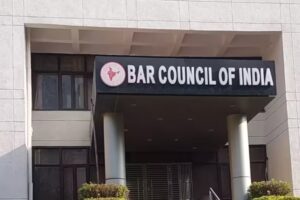
The notional aspect of an arrest has time and again been subjected to judicial scrutiny and deliberation because of the very fact that the rights of an individual arrested are often put at peril by instruments that wear the cape of perfect legality and often the very procedure and purpose of an arrest is seen to be violated.
This paper deals with Section 46 of the Criminal Procedure Code 1973 (CrPC), more specifically its Sub sections (2) and (3). The section through its words contains a string of loopholes which can be mis-used by authorities, police more particularly, to interpret it literally and justify any death that occurs while they are arresting any person. Easy justification and lack of accountability is what this section enables through its interpretation; although this fact must never be ignored that such an intent can never be promoted by any law maker. Still the section is in existence and in use. This article seeks to analyze the core flaws of the section and its misuse which is happening.
INTRODUCTION OF SECTION 46 OF CRIMINAL PROCEDURE CODE
Section 46 of the Criminal Procedure Code 1973 speaks explicitly about ‘Arrest how made’.
The word of primary importance here, which is arrest,has surprisingly never been defined anywhere including frameworks like Indian Penal Code (IPC), CrPC or any other enactment dealing with criminal offenses for that matter.
However, the section for discussion that is Section 46 of the CrPC somewhat talks about the word arrest by using the words ‘Touch’ and ‘Confine’. The term, in general sense, may be defined as deprivation of a person of his liberty, as in liberty to move anywhere, by a legal authority or at least by apparent legal authority.
There are 4 subsections in the said section of 46 but the ones often under scrutiny are sub sections (2) and (3). Section 46(3) reads as follows, “If such person forcibly resists the endeavor to arrest him, or attempts to evade the arrest, such police officer or other person may use all means necessary to affect the arrest.”
So this implies that if the person who is being arrested attempts to escape or evade their arrest in any manner or rather resists the police, then the police can use ‘all means necessary’ to effect the arrest. This expression ‘all means necessary’ may also mean unfettered force as a requirement to stop the fleeing accused.
Section 46(3) reads as: “Nothing in this section gives a right to cause the death of a person who is not accused of an offense punishable with death or with imprisonment for life.” This section explicitly says that there is nothing that would be used to justify the death of a person who has not been accused of an offense punishable with death or imprisonment for life.
So does this mean that the death caused in a circumstance otherwise is justifiable under the procedure under law? This also raises the question that is whether section 46 blatantly approves encounters and Police brutality in the garb of the powers granted to them.
JUSTIFICATION OF DEATH SOUGHT DURING ARRESTS UNDER SECTION 46
Critically analyzing the section brings forth the probable loopholes that the legislators and the law enforcers have long overlooked and this fact has been very well used to benefit by the people who have sworn to commit offenses according to the procedure established by law.
The High Court of Guwahati opined that “Causing of death of any human being by another human being is treated to be not an offence, when it is done strictly in accordance with law, for example, the execution of a convict who is awarded the death penalty by the competent court.” This premise that the police may cause death in circumstance hence provided has been actually considered in various cases.
So what section 46 (2) may be interpreted as is that, by the virtue of this case, something that would have been a plain case of culpable homicide or murder for that matter can be excused if the judge or the executor are acting to the procedure that has been laid down in the law.
This interpretation of the particular law has led to the rise in the case of Extra judicial killings, more commonly known as Encounters. If the police is able to show that there was any attempt to evade arrest or any attack on the police then the police is justifiable even if in the process of the arrest the life of the arrestee is lost.
Additionally, one more enactment is of prime importance here and should be considered while discussing arrests. Sections 100 and 103 of the Indian Penal Code illustrate the right of private defense of body and property. So if section 46(2) as well as 46(3), read together with the above mentioned provisions as enumerated in the IPC, is taken up as a shield by any police official or any executor of an arrest for that matter, then that person is basically foolproof to kill any person on the pretext of right to private defense or an evasion of arrest.
But this must be borne in mind that sections 100 and 103 of the IPC actually elaborate and try to justify circumstances which would justify the causal of the death but section 46 on the other hand just stresses upon the charges that have been levied upon the person and that alone justifies his death.
The section 46 only requires the fulfillment of two meager conditions for justification of the death thereby caused and they are:-
1. The person forcibly attempts to resist their arrest or tries to evade it
2. The person has been accused of any offense punishable with a death sentence or an imprisonment for life.
So it is quite evident that if critically analyzed, the sub sections (2) and (3) of section 46 have made it extremely easy for a death to be justified. No doubt cases of death have only risen in the past and up till now
As draconian as it may feel, provisions like these have been used to justify numerous encounters and because they have all been conducted with due importance laid upon the ‘procedures given by the law’, the parties causing the death have been always excused.
But being the judge in one’s own case is not something that is needed in this state that runs on a welfare model.
Time and again the courts of law in India in cases like Public Union for civil liberties v. Union of India and the National Human Rights Commission if India (NHRC) has tried to incorporate a mode of guidelines that would cut down the misuse of section 46(2) and (3) where in some cases branding the people as terrorists or insurgents is done but the authorities have failed to exercise those.
In fact NHRC provides strict guidelines regarding bestowing of gallantry awards and promotions upon those who have misused the powers granted under the right to arrest. The NHRC, in its revised guidelines issued on the 12th of May 2010 Point F, has strictly advised against this practice, until and unless the doubt on the executor is disproved beyond any iota of doubt.
The NHRC, in the said guidelines, advised that information report is to be made in cases in which death has occurred while arrest of a person is being made. But these sorts of guidelines are hardly being followed while dealing with cases of this kind.
SECTION 46 AND BEING A JUDGE IN ONE’S OWN CASE
The literal interpretation of section 46 makes the delivery of justice entirely at the hands of the executors. All this is because the literal interpretation of section 46 makes the executors so less accountable for their actions which would in normal circumstances amount to culpable homicide or murder. An increased quantum of Police accountability is called for.
The National Police Commission (NPC) appointed by the Government of India in 1977 promised a varied term of reference covering the police organization, its role, accountability functions, relations with the public, political watch in its work, misuse of powers, evaluation of its performance etc. said in its 8th report about the sensitization of the idea of holding some form of accountability to the people and this would be very crucial if the misuse of section 46(2) and (3) is to be stopped. Although this report did say that these complaints should be dealt with by the police itself.
It happens that most of the trials on this topic of death caused by the police during arrest is handled by them themselves and this was dealt in by the Padmanabhaiah Committee (2000) which said in its report at point number 25 that the complaint should be handled by a Non Statutory authority headed by the District Magistrate.
The NPC report also suggests withdrawal of Protection as have been given under Sections 132 and 197 of the CrPC 1973 which provide protection to various public servants against prosecution brought against them relating to performance of official duties. This may be regarded as a cue to stop the misuse of section 46 and justification of death because of the two pointers that have already been mentioned in page 5 because this would enable transparency, remove the garb of power under procedure and enable citizens to complain against the officials without being restrained by the procedural protection which are being used as shield.
The judiciary too has shown a pro police attitude in the past. For example in the case of Vandana Vikas Waghmare v. State of Maharashtra Bombay High Court held that, it is the responsibility of the police concerned to take adequate and appropriate steps to book the ‘gangsters’ under the law. In this interpretation the Court completely overlooked how the facets of subsections (2) and (3) can be so easily misinterpreted.
The modes of holding an official accountable are often capricious and politically expedient. The investigation process as to whether the pointers laid in section 46 of the CrPC are fulfilled or not, is susceptible to a great deal of manipulation because the judiciary would only act upon and according to the evidence and materials presented before it and this gives a great deal of power in the hands of the police.
Although streaks of reform in this attitude of the Courts of Law have been showcased in multiple cases.
The Supreme Court of India in the case of Extra Judicial Execution Victim Families Association, Justice Madan B. Lokur said that “Scrutiny by courts in these cases makes the state complain of its having to fight militants, insurgents and terrorists with one hand tied behind its back. Justice Lokur went on to say that such a criticism is not valid because what is under scrutiny is the Smoking Gun, not the operation. Then it went on to draw the difference between use of force in an operation and use of such deadly force that is akin to using a sledgehammer to kill a fly saying that one is an act of self-defense while the other an act of retaliation.
The Apex Court in the case of D.K. Basu v. State of West Bengal while framing guidelines that were to be followed in all cases of arrest or detention till formulation of legal provisions regarding the same are done insisted upon ‘transparency of action and accountability’ as safeguards against the misuse of powers entrusted to the police just as the one in Section 46 and pointed towards basic human values to be adopted.
The landmark case of Om Prakash elucidated the crux of what happens when arrest is made simply for the sake of it and the sanctity of a clean, authorized legal procedure is blatantly ignored, by stating, “Admonishment of ‘Trigger Happy Personnel who fabricate evidence and present the same to avail protection under sections like 46 of the CrPC is what is needed as according to the Judicial wing. Because killings in the garb of procedural laws would be just a form of State sponsored terrorism.”
CONCLUSION
Article 21 of the Indian Constitution reads as, “No person should be deprived of his life or personal liberty except according to procedure established by law”. So this points out to the fact that if procedure established by law is followed then deprivation of life or personal liberty is allowed which may also include a person’s death. This paves the perfect path for its misuse because evidence as to what actually happens in such encounters is often in the hands of the executors.
Deaths are quite often justified by calling those who are killed as militants insurgents etc. Now, in all probabilities, this fact must be noted in mind that police faces dire situations while dealing with criminals and miscreants, where sections like 46 of the CrPC helps dealing with the offenders faster and in a more effective way but the element of accountability, a faire and just welfare state and of course the Rule of Law which believes in Presumption of innocence also needs to be taken into account.
The post A SAFETY-VALVE FOR DEATH: SECTION 46 OF CODE OF CRIMINAL PROCEDURE AND INADEQUATE ACCOUNTABILITY appeared first on The Daily Guardian.




